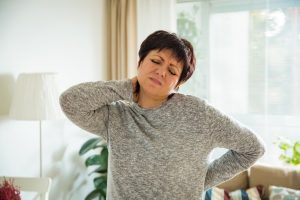
You will often feel sore post-workout if you changed your routine, increased intensity, or simply worked out for the first time in a long while.
If you want to start feeling better, quicker, you can try some of these helpful tips.
Tips to Reduce Soreness after a Workout
Get a massage: Massages may help ease muscle soreness by reducing inflammation and promoting mitochondrial biogenesis. One study found that massages helped reduce the release of cytokines, which are a key part of inflammation. There are a wide variety of massages available, so speak to a registered massage therapist about your unique needs to relieve soreness.
Ensure you cool-down after your workout: Simply stopping a workout and heading home can increase soreness. Ensure you’re taking a few minutes to cool down, bring down your heart rate, and above all, stretch. Gradually decreasing activity is a good way to prevent soreness and other unwanted symptoms like headaches and dizziness.
Eat right: What you eat before and after a workout plays a big role in soreness. Protein is essential for muscles, so consuming it prior to and after a workout can increase muscle repair and decrease soreness. It’s also important to eat foods high in potassium, as that is a key nutrient in preventing soreness.
Try foam rolling: You can give yourself a massage with a foam roller. Using a foam roller can help you target specific areas of the body and ease tension in the muscles.
Alternate cold and heat: After a workout, apply cold to select areas for about 20 minutes, then alternate with heat for another 20 minutes. If you have an injury – there is swelling or bruising – avoid heat and only apply cold.
By implementing these techniques into your post-workout routine, you can ease muscle soreness more effectively.
Also read:
- Muscle fatigue: Causes, symptoms, and treatment
- How to recover from muscle atrophy with diet and exercises
- Muscle knots: Causes and treatment